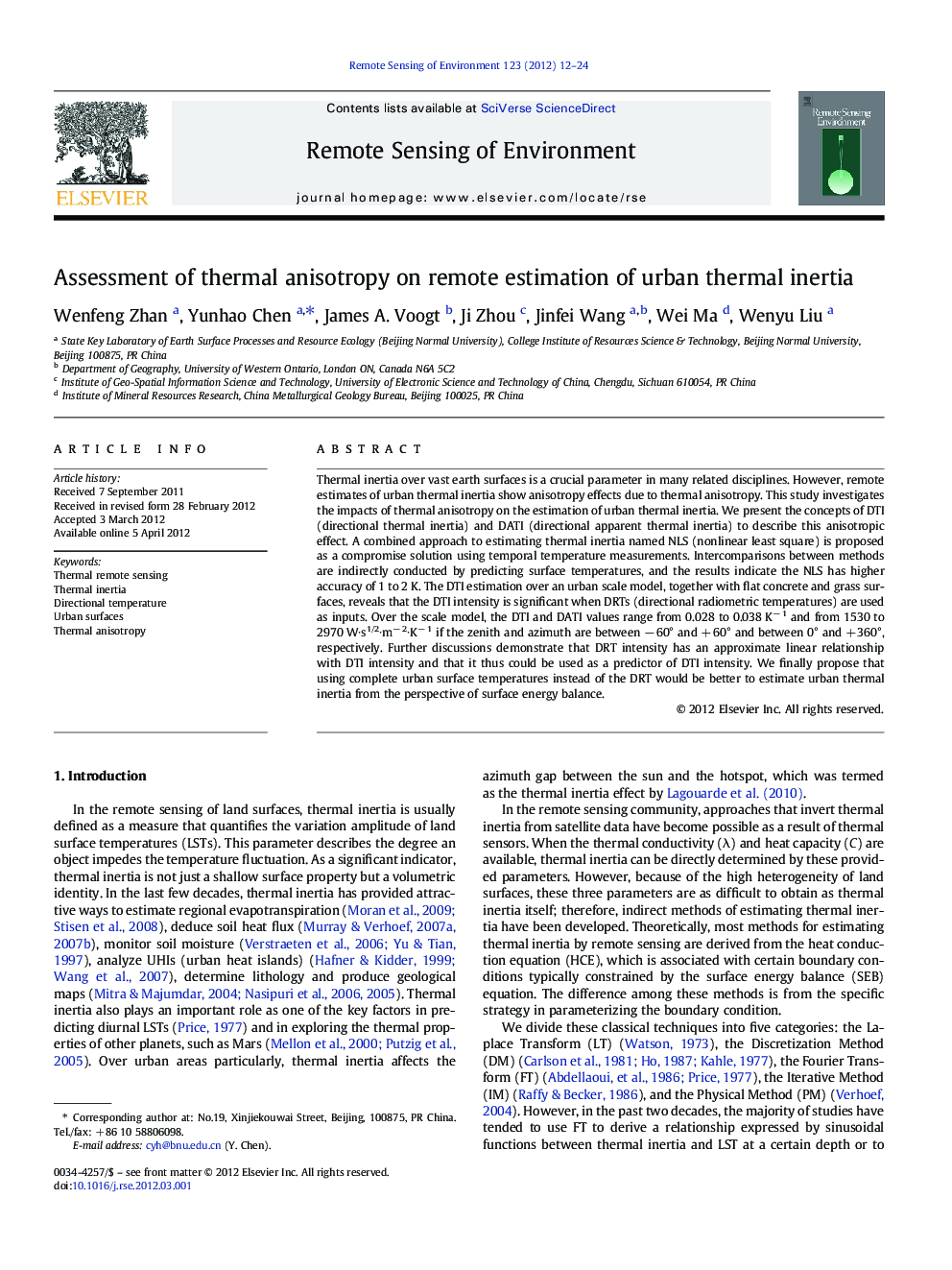| کد مقاله | کد نشریه | سال انتشار | مقاله انگلیسی | نسخه تمام متن |
|---|---|---|---|---|
| 6347527 | 1621277 | 2012 | 13 صفحه PDF | دانلود رایگان |

Thermal inertia over vast earth surfaces is a crucial parameter in many related disciplines. However, remote estimates of urban thermal inertia show anisotropy effects due to thermal anisotropy. This study investigates the impacts of thermal anisotropy on the estimation of urban thermal inertia. We present the concepts of DTI (directional thermal inertia) and DATI (directional apparent thermal inertia) to describe this anisotropic effect. A combined approach to estimating thermal inertia named NLS (nonlinear least square) is proposed as a compromise solution using temporal temperature measurements. Intercomparisons between methods are indirectly conducted by predicting surface temperatures, and the results indicate the NLS has higher accuracy of 1 to 2 K. The DTI estimation over an urban scale model, together with flat concrete and grass surfaces, reveals that the DTI intensity is significant when DRTs (directional radiometric temperatures) are used as inputs. Over the scale model, the DTI and DATI values range from 0.028 to 0.038 Kâ 1 and from 1530 to 2970 Wâs1/2âmâ 2âKâ 1 if the zenith and azimuth are between â 60° and + 60° and between 0° and + 360°, respectively. Further discussions demonstrate that DRT intensity has an approximate linear relationship with DTI intensity and that it thus could be used as a predictor of DTI intensity. We finally propose that using complete urban surface temperatures instead of the DRT would be better to estimate urban thermal inertia from the perspective of surface energy balance.
⺠We assess the impacts of thermal anisotropy on remote estimates of urban thermal inertia. ⺠We introduce the concept of directional thermal inertia (DTI). ⺠The temporal thermal anisotropy of typical urban surfaces is provided. ⺠The thermal anisotropy intensity can be a good predictor of DTI intensity.
Journal: Remote Sensing of Environment - Volume 123, August 2012, Pages 12-24